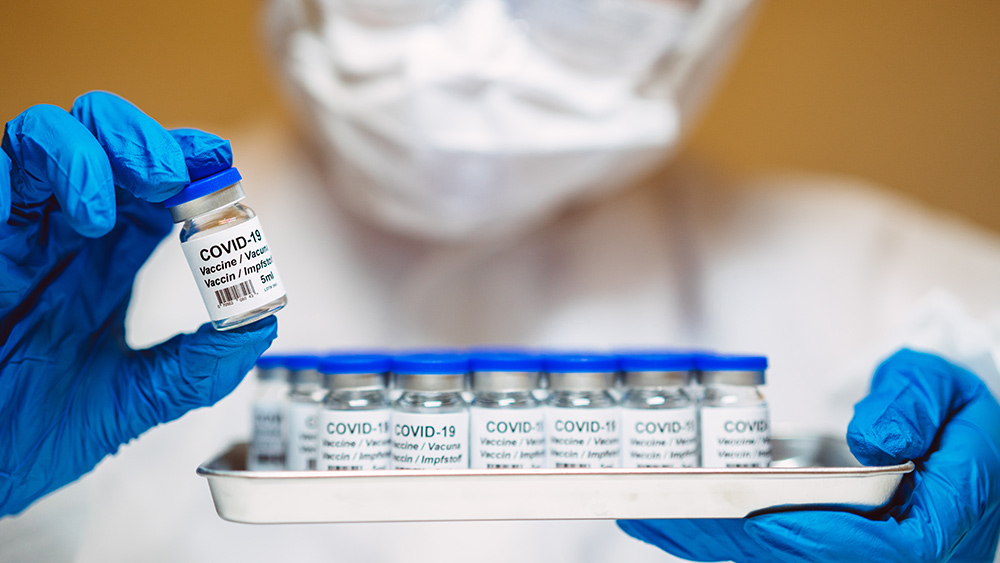Flame retardant chemicals found to interfere with women’s fertility
08/29/2017 / By Jhoanna Robinson

A study done at the Fertility Clinic at Massachusetts General Hospital concluded that organophosphate flame retardants (PFRs), which are utilized in the manufacture of such products as upholstered furniture, gym mats, baby products, and yoga mats, negatively impacted women’s reproductive health.
Flame-retardant materials are popular because manufacturers wish to accommodate consumer demand for products that burn easily. However, what we don’t know is that the chemicals that make these products flame-resistant could possibly leach into our bodies and affect our ability to procreate. Unfortunately, we can’t hide from these chemicals because they’re everywhere: in building materials, in clothing, in electronics. Even the very air that we breathe might contain some of these chemicals.
According to Department of Environment Health at Harvard Chan School research fellow Courtney Carignan, “These findings suggest that exposure to PFRs may be one of many risk factors for lower reproductive success. They also add to the body of evidence indicating a need to reduce the use of these flame retardants and identify safer alternatives.”
For his part, Professor Russ Hauser, Carignan’s colleague at Harvard University’s school of public health, said, “Couples undergoing in vitro fertilization (IVF) and trying to improve their chances of success by reducing their exposure to environmental chemicals may want to opt for products that are flame-retardant free.” (Related: Infertility Linked to Common Household Chemicals.)

The flame retardant pentabromodiphenyl ether (PentaBDE), which was used in polyurethane foam, was phased out over 10 years ago after it was found to cause ill effects to health in animal and epidemiological studies. PFRs were found to be safer; the only caveat was that they caused hormone disruption in women.
The study specifically found that these flame retardant chemicals inhibited the production of thyroid and sex hormones in animals, and jeopardized embryo development.
The researchers studied urine samples from 211 women who were undergoing IVF at the Massachusetts General Hospital Fertility Center from 2005 to 2015. The study resulted in findings that showed that the urinary metabolites of three PFRs – tris( 1,3-dichloro-2-propyl)phosphate (TDCIPP), triphenyl phosphate (TPHP), and mono-ITP – were identified in more than 80 percent of the participants.
However, Carignan said that exposure to flame retardant chemicals is not the be-all and end-all of fertility problems. “There are a lot of contributors to infertility. This is just one factor, and people need to be careful not to beat themselves up over these types of exposures.”
Dr. Brian Levine, a practice director at Colorado Center for Reproductive Medicine said the study’s results are disconcerting. He already advises infertile patients to stop eating processed foods and partake only of organic fruits and vegetables, make sure to get enough exercise, and do away with taking alcohol and illicit drugs while undergoing IVF.
Professor Richard Anderson, an expert in clinical reproductive science at Edinburgh University seconded Levine’s statement, said: “There is a growing concern that the chemicals we are all exposed to may have an impact on fertility. Worryingly, higher concentrations of these chemicals were associated with substantial reductions in the success of IVF, with a lower chance of having a baby. While this study doesn’t prove that these chemicals are the cause of the lower success rate, it provides a firm basis for further experiments to investigate them.”
The study was published in Environmental Health Perspectives on Friday, August 25.
Read more stories such as this one at WomensHealth.news.
Sources include:
Submit a correction >>
Tagged Under:
Chemical exposure, Fertility, flame retardant chemicals, in vitro fertilization, reproductive health, reproductive issues, toxic chemicals, women's health
This article may contain statements that reflect the opinion of the author





















